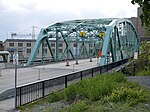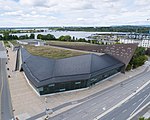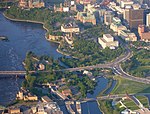Social Sciences and Humanities Research Council
1977 establishments in CanadaEducation finance in CanadaFederal departments and agencies of CanadaFunding bodies of CanadaGovernment agencies established in 1977 ... and 2 more
Innovation, Science and Economic Development CanadaMembers of the International Science Council
The Social Sciences and Humanities Research Council of Canada (SSHRC; French: Conseil de recherches en sciences humaines du Canada, CRSH) is a Canadian federal research-funding agency that promotes and supports post-secondary research and training in the humanities and social sciences. It is one of three major federal granting agencies (the others being the Natural Sciences and Engineering Research Council and Canadian Institutes for Health Research) that together are referred to as the "Tri-Council" or "Tri-Agency.
Excerpt from the Wikipedia article Social Sciences and Humanities Research Council (License: CC BY-SA 3.0, Authors).Social Sciences and Humanities Research Council
Chaudière Private, (Old) Ottawa Somerset
Geographical coordinates (GPS) Address Nearby Places Show on map
Geographical coordinates (GPS)
| Latitude | Longitude |
|---|---|
| N 45.420694444444 ° | E -75.71725 ° |
Address
Chaudière Private
Chaudière Private
K1R 1C5 (Old) Ottawa, Somerset
Ontario, Canada
Open on Google Maps









